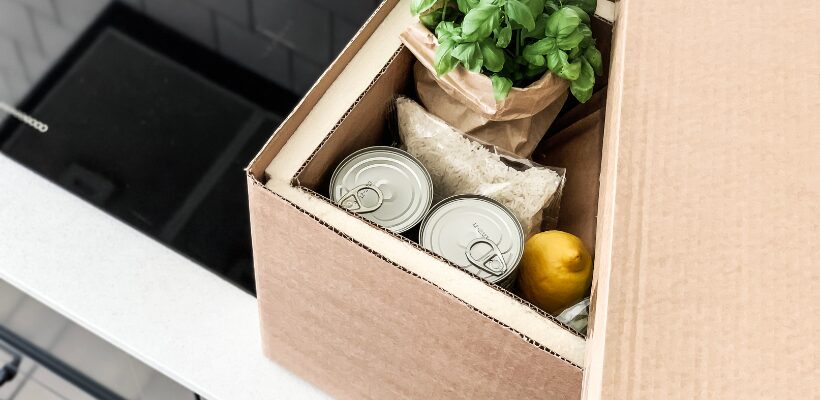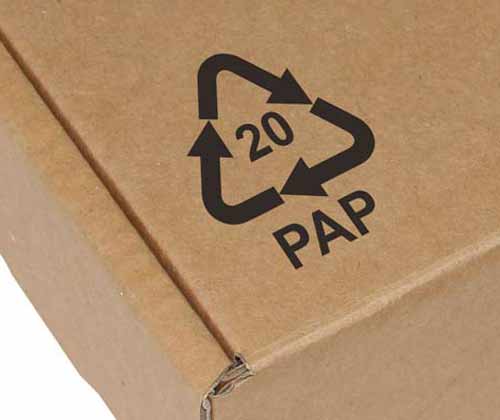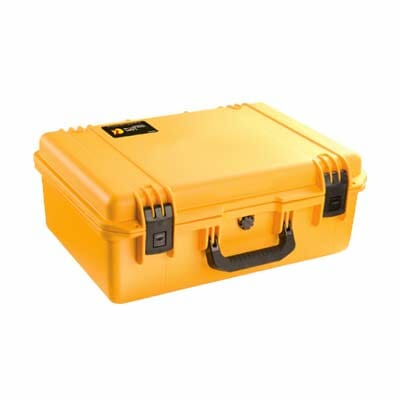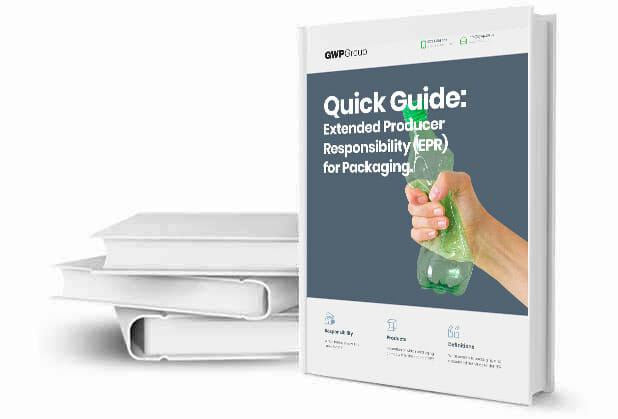Introduction
Helping your business make sense of packaging compliance
If your business puts products on the UK market, whether you’re a small startup or a global brand, the way you use packaging is regulated. The Packaging (Essential Requirements) Regulations 2015 are the legal framework that governs packaging on the UK market, and they apply to everything from simple corrugated packaging to the more complex layers of box inserts, crates, and transit packaging.
These regulations were designed to reduce the environmental impact of packaging, ensuring that the materials you use are proportionate, safe, and easier to reuse or recycle. They require you to design and use packaging in a responsible and measured way.
In this blog, we’ll take a closer look at what these regulations are, where they came from, who they affect, and how you can comply. We’ll also cover the risks of getting it wrong, the exemptions that exist, and how these rules fit alongside newer packaging laws.
Contents
What are the essential requirement regulations?
A foundation for responsible packaging design
The Packaging (Essential Requirements) Regulations 2015 set out clear ground rules for anyone who is placing packaging on the UK market. Their purpose is to make sure packaging is designed and used in ways that protect the environment. That means businesses must think carefully about the weight and volume of their packaging, its recyclability and the substances that they contain.

Every kind of packaging is covered within these regulations. Primary packaging, like bottles, jars, and boxes, must meet the same standards as secondary packaging, like shrink wrap or cardboard cartons. Even the tertiary or transit packaging used for pallets and shipping must comply with the regulations.
The law asks three main questions of packaging:
- Is the packaging using more material than necessary?
- Can the packaging be recovered, reused, or recycled after use?
- Does the packaging contain heavy metals or hazardous substances above the permitted limits?
If your packaging design can meet these criteria, you are well on the way to compliance.
The history of the regulations
Where they came from and why they exist
The origins of the essential requirements regulations lie in European law. The EU introduced the EU Packaging and Packaging Waste Directive (94/62/EC), in the 1990s to deal with rising levels of waste and to encourage recycling across member states. The UK implemented this through its own regulations, which were updated several times before being consolidated in the 2015 version.
The 2015 regulations brought together years of amendments and decisions into a single framework. They introduced clarity for businesses, strengthened the limits on heavy metals, and encouraged design practices that reduce waste at the source, and in doing so, aligned UK packaging standards with wider European objectives.
Although the UK has since left the EU, these regulations remain in place. They are considered “retained law” and still serve as the backbone of packaging compliance today.
Who is responsible?
Understanding who the law applies to
Responsibility for compliance with the Packaging (Essential Requirements) Regulations 2015 lies with any business that places packaging on the UK market. This includes the design, production, and supply of packaging, as well as the act of filling packaging with goods or importing it into the country.
Packers and fillers
For packers and fillers, responsibility arises the moment a product is placed and prepared for sale. Even if you didn’t design or manufacture the packaging, you are still responsible for compliance once you use it to bring goods to market. This is because your business can select what packaging is used and how it is presented.
In practice, this means that you should not solely rely on assurances from your supplier; you should review the packaging you use and find out whether it can be reused or recycled, and whether evidence exists that it meets the heavy metals restriction. If an investigation occurs, Trading Standards will expect you to show that your decisions as a packer or filler were informed and documented.
Importers
Importers have a special place in the regulations because they are the entry point for packaging produced outside the UK. Once packaging crosses the border into the UK market, the importer is treated as the responsible party. It makes no difference whether the packaging was compliant in its country of origin; if you import it, you must ensure it complies with UK law.
For importers, due diligence is crucial. You should request detailed specifications from overseas suppliers, obtain testing reports or declarations on heavy metals, and check whether the packaging design aligns with the essential requirements.
Without this evidence, you risk being held liable if the packaging is found to be non-compliant. In many cases, importers find it helpful to build contractual obligations into their supply agreements so that compliance responsibilities are clearly defined and enforceable.
The key requirements and how to comply
What the law states and how you can comply with it
The regulations are built around a set of “essential requirements”. These are the conditions that your packaging must satisfy before it can be legally sold within the UK. They apply equally to large manufacturers and small businesses, so it’s essential to understand how they work.

Minimisation requirements
Packaging must be no more than the minimum volume and weight needed to maintain product safety, hygiene, and consumer acceptance. This doesn’t ban specific materials like plastic or glass, but it does require you to consider whether your packaging is excessive.
Reuse and recovery requirement
Packaging must be designed so that it can be reused or recovered. Recovery can take place in three ways:
- Material recycling
- Energy recovery
- Composting/biodegradation
Hazardous substance minimisation
Your packaging should not release harmful or toxic substances in significant quantities when disposed of, whether through incineration, landfill, or recycling processes.
Heavy metal limits
The combined concentration of cadmium, mercury, lead, and hexavalent chromium in packaging or any component of the packaging must not exceed 100 parts per million (ppm).
There are some specific exemptions, such as for lead crystal glass, certain glass packaging, and plastic pallets or crates that meet strict recycling and control conditions.
Enforecement, risks, and penalties
What happens if you don't comply?
Compliance is monitored by the Trading Standards in England, Wales, and Scotland and by the Department for the Economy in Northern Ireland. These bodies have the authority to investigate businesses, take samples of packaging, and demand access to your compliance records.

If your packaging is found to breach the regulations, the consequences can be serious. You could face fines or, in more severe cases, criminal prosecution. Even if penalties are avoided, the time and cost of dealing with investigations can disrupt normal operations and damage relationships between you, your customers and suppliers.
There’s also a reputational risk to consider: non-compliance can suggest that your business doesn’t care about its environmental responsibilities, and in today’s market, where consumers and retailers demand sustainable practices, that perception can be just as damaging as a financial penalty.
Exemptions
What doesn't apply in these regulations?
The Packaging (Essential Requirements) Regulations 2015 do recognise that some packaging can’t meet the heavy metals limit in the usual way. Exemptions apply in specific cases, such as packaging made entirely of lead crystal glass, or glass packaging where higher levels result from recycled content rather than deliberate design choices.

Another exemption exists for plastic crates and pallets that are part of controlled reuse systems. These exemptions are tightly defined and usually come with conditions. For instance, glass packaging that exceeds the heavy metal limit must still demonstrate that no metals were deliberately added and that proper reporting takes place.
It’s worth noting that an exemption from one part of the law doesn’t free you from all requirements. Even if you qualify for an exemption, your packaging must still use no more material than necessary and be designed with recovery in mind.
Interactions with newer regulations
How do these regulations fit with today's packaging policies
Although the Packaging (Essential Requirements) Regulations 2015 remain the legal foundation, they now operate alongside newer policies. The most significant of these is the Extended Producer Responsibility (EPR) legislation, which requires businesses to report data on the packaging that they place on the market and to contribute financially towards the costs of collecting and recycling it.
The Plastic Packaging Tax, introduced in 2022, also plays an important role. It charges businesses that use plastic packaging with less than 30% recycled content, creating a financial incentive to choose recycled materials. Both EPR and the tax push businesses further towards sustainable packaging design.
What this means in practice is that compliance is no longer just about avoiding fines. Poorly designed packaging can now increase your costs overall, while good design that meets the essential requirements can help keep those costs down.
Practical guidance for compliance
Turning compliance into business practice
The best way to comply with these regulations is to make packaging compliance part of your everyday processes. Begin by reviewing your current packaging, focusing on the amount of material used, the recyclability of each component, and whether any reductions can be made without compromising product safety.
Next, ensure your supply chain supports compliance by asking suppliers for certificates or declarations confirming their materials meet heavy metal limits and, if relevant, recycled content standards. Keep these records organised and accessible, as enforcement authorities can ask for them at any time.

It would also be wise to involve multiple teams in the process, such as design, procurement, and sustainability staff. They should all understand how their choices affect compliance. For smaller businesses, this may simply mean keeping a central folder of supplier documents. Larger organisations might require more formal auditing and policies to track compliance across different departments.
Finally, remember that compliance is an ongoing task and as your packaging changes or as new regulations are introduced or evolve, your processes should be reviewed and updated. Regular checks, staff training, and clear record-keeping will give you the confidence that your business is meeting its obligations.
Summary
What to take away from this guide
The Packaging (Essential Requirements) Regulations 2015 remain a cornerstone of UK packaging law. They require businesses to minimise the amount of packaging used, ensure it can be recovered or recycled, and keep hazardous substances within strict limits. Responsibility often falls on brand owners, packers, fillers, and importers, and Trading Standards carry out enforcement.
While there are exemptions, these are tightly controlled, and the arrival of newer regimes like Extended Producer Responsibility (EPR) and the Plastic Packaging Tax only increases the need for compliance. The best way forward is to embed these requirements into your packaging design, supply chain, and record-keeping.
By doing so, you can ensure you stay on the right side of the law, strengthen your business’s environmental credentials and meet the growing expectations of customers, retailers, and regulators alike.
Get in touch with our team of packaging experts today to discuss your packaging options.
About the author

David is responsible for driving improvements in sustainability at GWP and the wider Macfarlane Group, having previously performed a similar role for Zero Waste Scotland.
Important note
Due to the sensitive and regulated nature of the topic this guide addresses (eco-friendly packaging) we have taken extra steps to ensure its accuracy and reliability. You can find out more in our content policy.
All information is, to the best of our knowledge, accurate and correct at the time of publication. Please also note that, as all scenarios vary, not all information contained in this guide may apply to your specific application. There may also be specific regulations or laws, not covered within this particular guide, that apply. Please view the list of sustainable packaging regulations for further details.
Share this article
Further reading
Featured products
Get in touch
Related guides
What is the packaging Extended Producer Responsibility (EPR)?
EPR reporting – what packaging data does the new scheme require?
Packaging Waste Regulations quick guide (2023 update)
A beginners guide to the Plastic Packaging Tax
Recycling symbols on packaging – explanation and free icon downloads
Recycling Assessment Methodology: What it means for your business
5 ways to avoid or reduce the impact of the tax on plastic packaging


















































